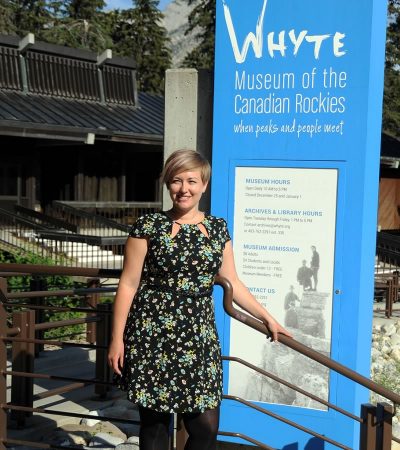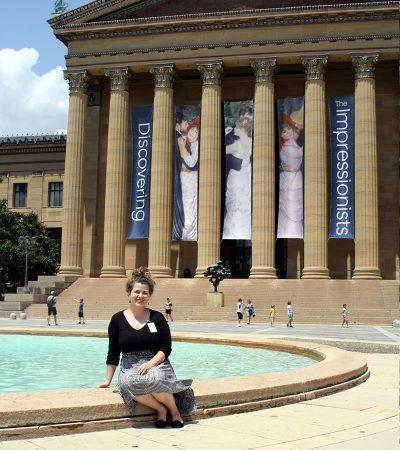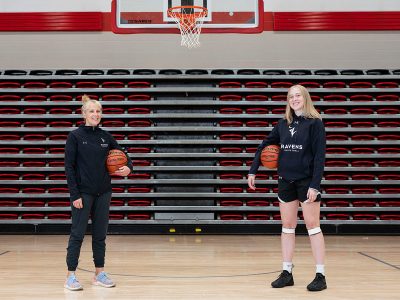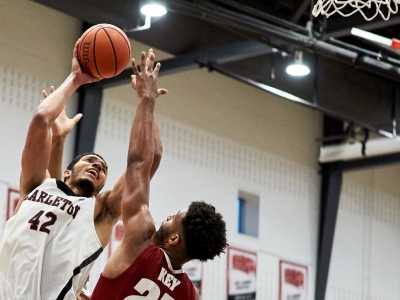Students in Carleton’s Master’s program in Art History have a unique opportunity to learn on-site at national museums and related institutions that often leads to flourishing careers in the field.
Manon Gaudet is on a MuSe Internship at the Metropolitan Museum of Art in New York. “This is one of the most prized student internships in the art museum world,” says Carol Payne, associate professor and graduate supervisor for the department.
The Met has more than two million works of art spanning 5,000 years of culture, making it one of the most prestigious art museums in the world.
Gaudet is working with the assistant curator in the American Decorative Arts Department to reconstruct the life of a late-19th century silver designer. She explains that the designer was an avid collector of East Asian decorative objects, among others, and the curator she is working with is interested in tracing the links between his private collecting and the silver designs produced under his directorship at Tiffany’s. “Telling the story of someone who didn’t leave behind personal papers is all in the minute details and it is so fun to sort through them to reconstruct a narrative,” says Gaudet.
She continues: “I have had the opportunity to hear and learn from so many different museum professionals including, the director of the museum, conservation specialists, curators, educators and digital media experts. I’ve been able to develop a public gallery talk on a topic of my choosing, which has meant having the museum’s remarkable collection as a playground of sorts!”
Gaudet and grad student Danielle Siemens both won Sir James Lougheed Awards of Distinction, worth $15,000, from the Alberta government. Only seven of these awards are given out at the master’s level each year.
“After an expensive summer in New York, this award will be indispensable in helping me to support myself while working on my thesis that looks at a collector named Mary Weekes,” shares Gaudet.
Siemens will use some of her award money to conduct thesis research of photographer Rosemary Gilliat Eaton and her work in the 1950s and 60s. “I will primarily focus on Gilliat Eaton’s work in the Arctic and how her photographs both conform to and complicate a myth of the ‘North’ and its peoples,” says Siemens.
This summer, Brittany Watson is working as an archival assistant at the Whyte Museum of the Canadian Rockies in Banff, Alberta.
She says: “I am gleaning valuable insights into working with archival collections, how an archives of the scale at the Whyte Museum functions within the institution as a whole, and how archival objects are shown or displayed, in particular, historical photographic collections.”
Watson was awarded a highly competitive RBC Foundation Museum Mentorship Award from the Canadian Museums Association. The CMA, Canada’s national museum association, awards only two of these awards per year. The award is allowing her to work at the Whyte Museum.
Watson is doing her thesis on a particular collection by photographer Byron Harmon, whose collection of photos is housed at the Whyte Museum. The photos are of members of the Ĩyãħé Nakoda (Stoney Nakoda), Tsuu T’ina (Sarcee), Ktunaxa (Kootenay), and Siksika (Blackfoot) First Nations in and around Banff between approximately 1906 and 1922.

Watson at the Whyte Museum
Rebecca Sullivan, who was one of the first two students to graduate with a concentration in Art Exhibition and Curatorial Practices, was selected as an intern for the Curatorial Department in Contemporary Art at the Philadelphia Museum of Art (PMA). She is working on a variety of projects, including updating and organizing object files for their permanent collection and conducting research for future museum publications and exhibitions. Additionally, her internship includes scheduled presentations from every department at the museum, field trips to surrounding arts institutions, and tours of the PMA’s diverse gallery spaces.

Rebecca Sullivan
Last year, Sullivan participated in a class pilot that gave her and her classmates unprecedented access to the National Gallery of Canada (NGC). “They learned how a great, world class art museum like the National Gallery works and they made their own contributions to it by curating exhibitions from the collection of the National Gallery archives,” explains Payne.
The students participated in behind-the-scenes tours, a group-curated exhibition, an individual exhibition proposal that was presented to National Gallery of Canada curators, and they were allowed to attend National Gallery business meetings.
This innovative class continues to be an exciting part of the MA program in Art History.
At the Gallery, Sullivan was able to be a part of the installation process of Geoffrey Farmer’s epic sculptural work entitled Leaves of Grass, which was part of the Canadian Biennial. “I am grateful that I was able to have this experience with a highly respected and successful Canadian artist,” says Sullivan.
“I am very excited to continue curatorial work in a different country and I have no doubt that my experiences at Carleton and the NGC helped make it happen,” she says.
Art History students also benefit from having an excellent art gallery on campus (CUAG) that provides a vital cultural resource. A number of students have gained experience by working there.
MA student Hannah Keating is spending the summer evaluating the strengths of the Spencer Mill Foundation’s collection and producing a detailed exhibition plan to revitalize and improve their current exhibit spaces that highlights the history of milling in Spencerville and improves the experience of visitors.
Also this summer, Jasmine Inglis is working as a Research Assistant and Editor at the Montreal Museum of Fine Arts and is helping to organize an exhibition on contemporary Aboriginal art for the 2017 sesquicentennial.
And graduate student Anna Paluch is writing articles on different activities that are happening at Canada Council’s Art Bank, and topics that highlight artworks or themes found in their collection. “It is beyond rewarding working for the Art Bank,” says Paluch. “It promotes my creative thinking skills, allowing me to find connections between so many diverse artists; it’s a very stimulating environment. I just love it!
More than 75 per cent of Art History’s alumni are working in the field or pursuing doctoral degrees.
Friday, July 24, 2015 in Arts and Social Sciences
Share: Twitter, Facebook



